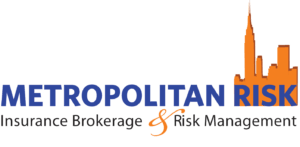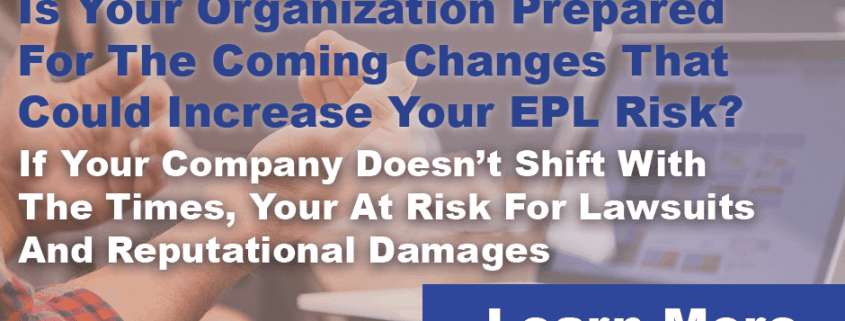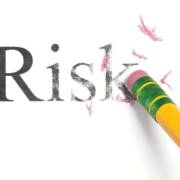Rapidly changing times bring rapidly changing standards when it comes to things like diversity, harassment, and discrimination. Employment practices liability has always had significant exposure but the current social climate adds a hypersensitivity surrounding these topics which are bringing forth calls for new regulation. Consumers are more than ever keeping a close watch on both private and public corporations to make sure that they treat its employees fairly. Companies that don’t shift with the times can and will face costly lawsuits and reputational damage.
Below are some regulatory changes that are already set in motion:
The Federal standard no longer applies
This past August, states like New York which ALREADY had a lenient threshold when it came to proving discriminatory harassment, amended a law to make it even easier to prove harassment. New York now requires all companies to adopt a written sexual harassment policy as well as have all employees “interactively” trained within 90 days of getting hired. Prior to this, NYS followed the federal burden of proof needed to provide “severe & pervasive” harassment to prove a claim
Now, the person claiming harassment does not need to demonstrate the existence of another individual whose treatment compares to their experience. Meaning, the burden of proof lies not with the person claiming harassment, but on the accused to prove the contrary.
Example: The accused is guilty until proven innocent. Instead of innocent until proven guilty.
New legislation determined that there must be Female representation on the board of directors.
Legislators in California ruled in September 2018 that any publicly held company where the principal executives reside in the state MUST have women on the board.
This new law is already evolving; by the end of 2019, such company boards MUST include one woman and by the end of 2021, that number will increase depending on the total number of board members. Companies that fall out of compliance are subject to an initial fine of $100,000 and all subsequent violations at $300,000 each.
Example:
761 publicly traded companies are currently HQ’d in California. As of October 2019, at least 70 companies are out of compliance with this legislation Source
Discrimination Against Potential Employees With Criminal Records
The Equal Employment Opportunity Commission (EEOC) launched an initiative in 2008 in opposition to practices used by employers when making employment selections based on arrest and conviction records. They feel that this conduct negatively impacts certain minority groups. There have been significant amounts of case law surrounding the legality of asking applicants about possible criminal history.
At present. 35 states have passed legislation regarding this practice but each state has its own approach. In most states, employers are not allowed to ask any conviction questions but allow a background check after a Conditional Offer of Employment is made. If the offer is rescinded due to a criminal history found, recent precedent requires that the employer must demonstrate some sort of relationship between the conviction(s) and the job applied for.
Example: If you were convicted of something like embezzlement and you are disqualified from a Bus Driving job, a case could be made against the employer. But if you are applying for a job in let’s say, the accounting department, that is a different situation.
Non-Disclosure provisions will be a thing of the past
Historically, settlement agreements usually include a non-disclosure provision where
 Money is paid but ONLY the plaintiff is prohibited from discussing the case. (Hush Money) The argument for this is obvious,
Money is paid but ONLY the plaintiff is prohibited from discussing the case. (Hush Money) The argument for this is obvious,
it allows the continuation of inappropriate behavior by sweeping things like discrimination or harassment accusations under the carpet. New York and California both passed legislation that eliminates the use of Non-disclosure agreements on settlements of discrimination or sexual harassment cases. The culture of wrongdoing in a company will NOT change if it is not brought out into the open.
Salary Data now used as an Underwriting tool
The EEOC is requiring salary data across on its EEO-1 reports. What is an EEO-1 report? It is a report/survey required by companies with more than 100 employees. It indicates the demographic breakdown of its employees across 10 job categories. The change this year is that the EEOC wants the salary data in those categories as well. It will show the rate paid in these categories based on gender, race and national origins.
From an underwriting standpoint, this information is invaluable. A potential class-action lawsuit situation may occur if there are large pay discrepancies related to race, gender, or national origin. This data will help underwriters understand the risk they are taking. It will also help Risk Managers understand where to apply resources, decreasing the chances of these claims being filed.
Example:
The U.S. Women’s’ Soccer Team filing a gender discrimination lawsuit against the soccer federation over pay equity and working conditions.
Source
In conclusion
These changes made at the state levels will eventually turn into National trends. If you are a business owner, you should expect your state to pass similar legislation. If you are a proactive employer, knowing what new legislation means to your company will help you limit your exposure. It will also help understand how to better transfer the risk to carriers when it comes to employment practices liability.
We speak with people all of the time who think “Risk Management” as only a preventative measure. That is a component and what we talk about with regards to proactive employers. But the bigger picture is Risk Management is ALSO about accepting that you WILL have a loss. When that time comes, make sure you have an Action Plan and procedures mitigating the impact of the claim. Observe, Orient, Decide, Act…
For more information on Employment Practices Liability Risks and how your organization can better protect themselves from EPL claims, contact a risk advisor at 914-357-8444.




